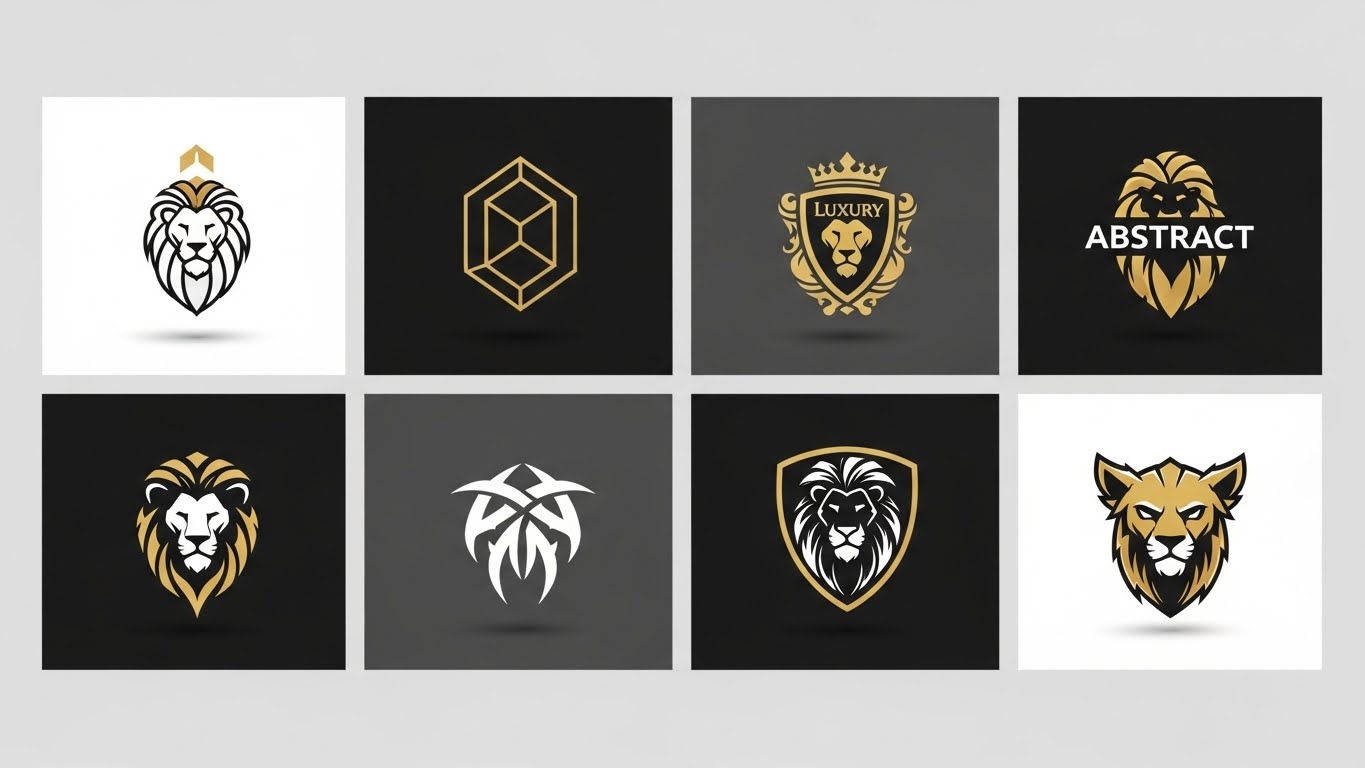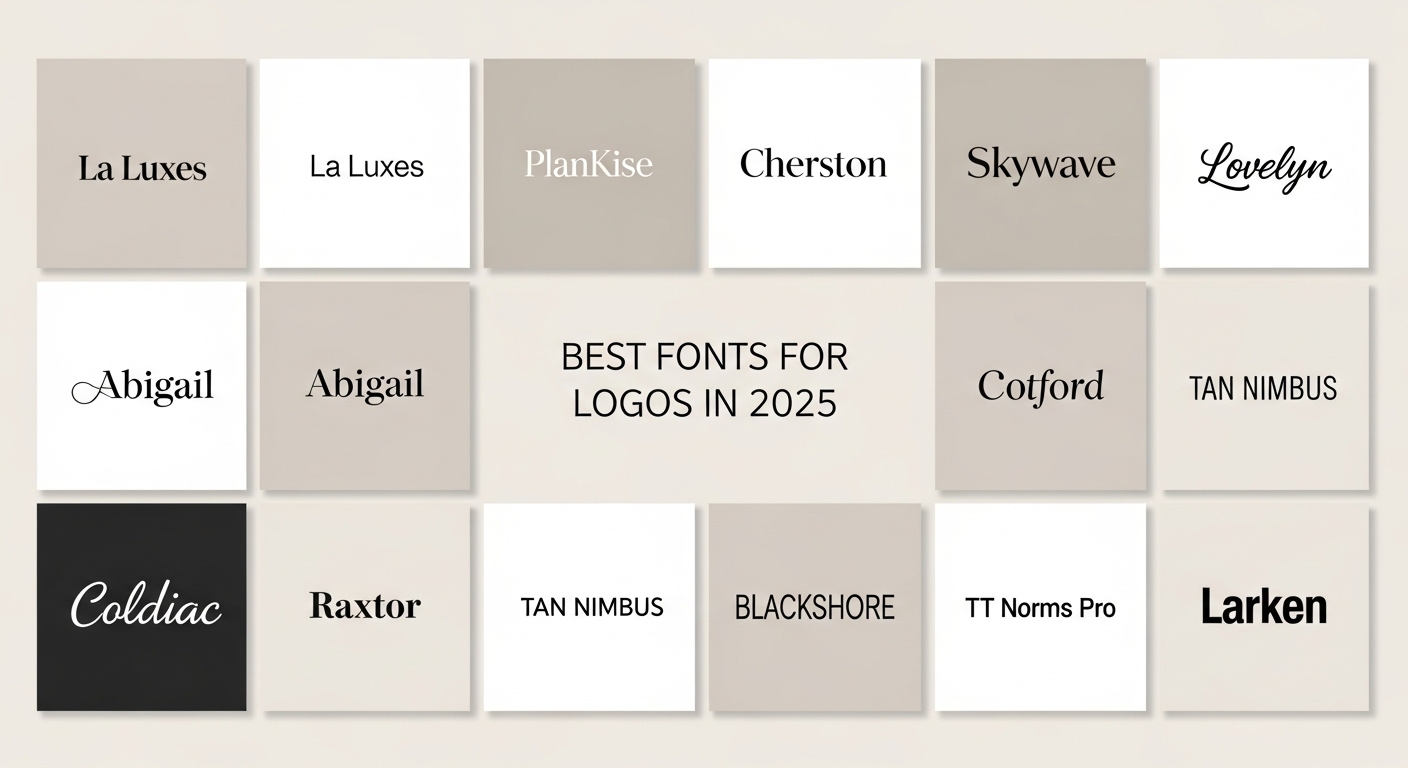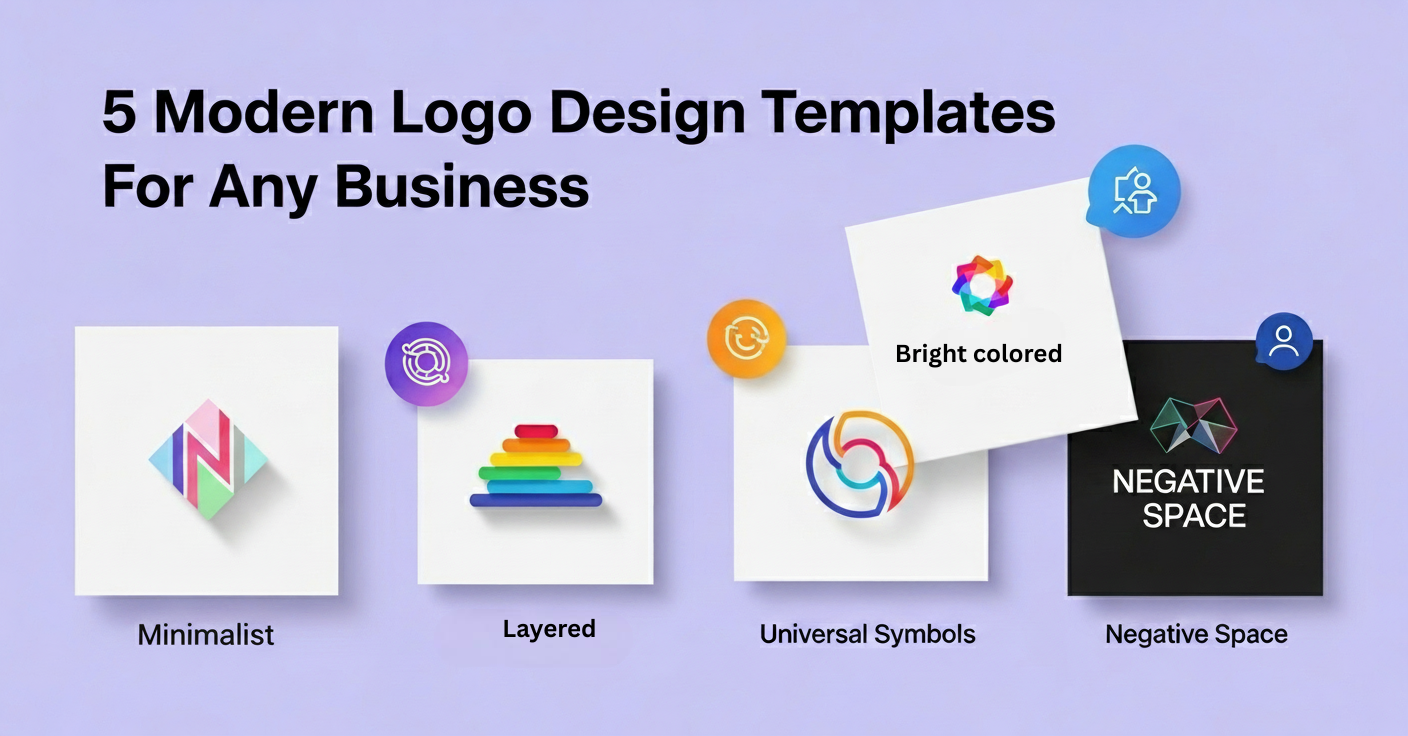Look around and you’ll see lion logos everywhere. From banks to luxury cars, sports teams to tech startups, the lion shows up again and again. Why? Because the meaning of the lion symbol in logos goes deep. A lion on a brand instantly says: power, strength, courage, and leadership. It’s a symbol that humans have trusted for thousands of years.
Symbol meanings play a huge role in branding, just like we discussed in our guide on hidden logo messages.
TL;DR – Meaning of Lion Symbol in Logos
This guide breaks down everything you need to know about lion logos, from what the lion symbolizes to how brands use it for impact. You’ll learn:
- What a lion represents in branding
- Its cultural and historical significance
- Why lion logos feel powerful and trustworthy
- Popular lion logo styles and real-world examples
- Industries that commonly use lion symbolism
- How to design a lion logo that stands out
Let’s explore why this ancient symbol still dominates modern branding.
What does the meaning of the Lion Symbol in the Logos
The meaning of the lion symbol in logos packs multiple messages into one powerful image. Here’s what a lion tells your customers:
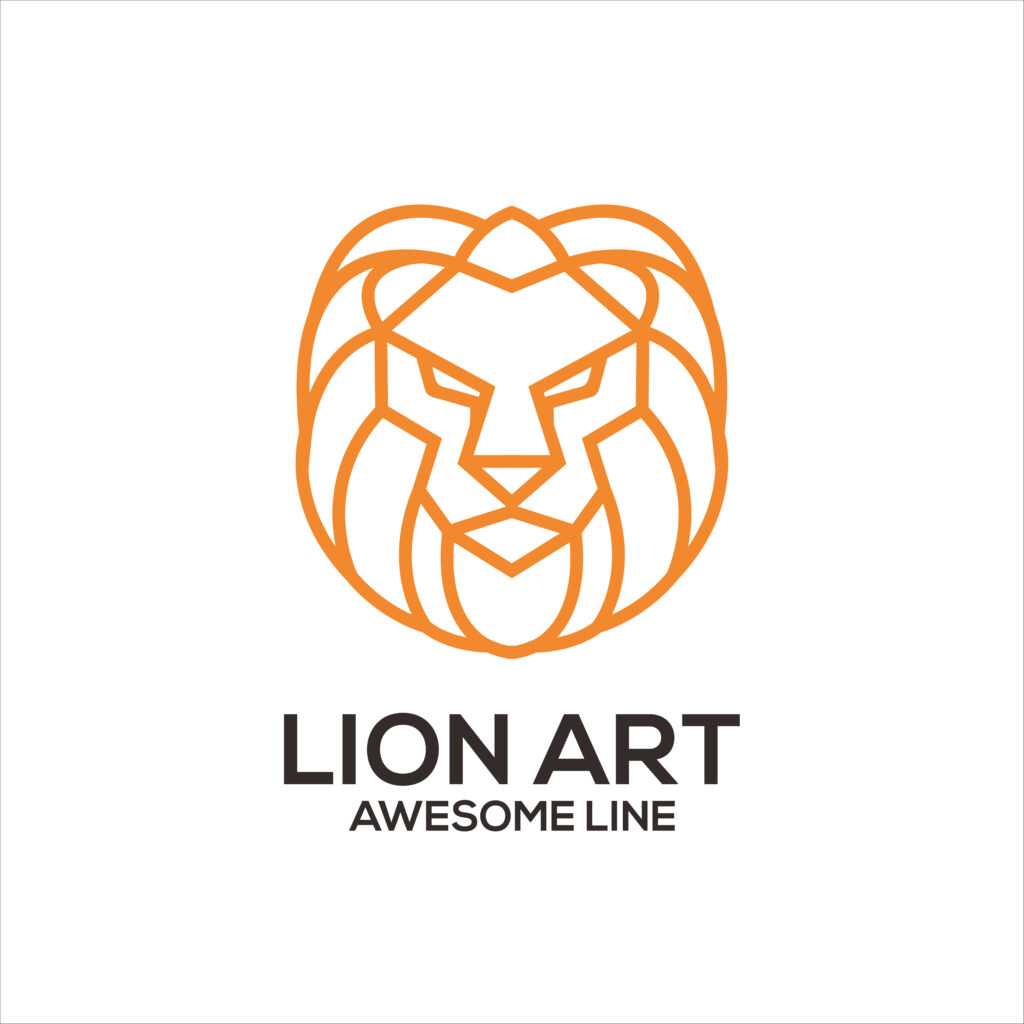
Strength & Dominance
Lions are the king of the jungle. When you put a lion in your logo, you’re saying your brand is a leader in your field. You’re not a follower. You dominate your space.
Power & Authority
A lion commands respect. Brands use lions to show they have influence and control. They make the rules. Others follow.
Leadership & Mastery
Lions lead their pride. A lion logo tells people your brand guides others. You’re the expert. You know what you’re doing.
Courage & Bravery
Lions face danger head-on. Brands with lion logos want to show boldness and confidence. They take risks and aren’t afraid of challenges.
Prestige & Luxury
For centuries, kings and nobles used lion symbols. Today, luxury brands use lions to show high-end quality and exclusivity.
Safety, Security & Reliability
Lions protect their pride. Banks and insurance companies use lions to promise protection and dependability.
Heritage, History & Nobility
Lions connect your brand to ancient traditions of royalty and honor. This works well for established companies with long histories.
Cultural & Historical Significance of the Lion
The meaning of the lion symbol in logos comes from thousands of years of human culture. Lions meant something powerful in almost every ancient civilization.
Many cultures associated lions with royalty and protection because of the fearless defense of their pride. National Geographic highlights that lions are the only social big cats, forming tightly bonded groups, a behavior that naturally translates into symbolism for unity and power.
Lion Symbolism Across Ancient Cultures
| Culture | Meaning & Symbolism |
|---|---|
| Egypt | Lions symbolized divine protection and power. The goddess Sekhmet appeared as a lioness, and the Sphinx combined a human head with a lion’s body to represent royal guardianship. |
| Greece | The myth of Hercules and the Nemean Lion made lions a symbol of extraordinary bravery and human triumph over nature. |
| India | The Ashoka Pillar with four lions (now India’s national emblem) symbolizes courage, pride, confidence, and unity. The goddess Durga rides a lion into battle, signifying protection and strength. |
| China | Guardian lions (Foo Dogs) placed at temples and palaces symbolize protection and harmony. Though lions weren’t native to China, they became iconic protectors in Chinese culture. |
| Persia & Mesopotamia | The Ishtar Gate featured lion reliefs representing royal power and divine protection. Lions symbolized kingship and authority across ancient Mesopotamia. |
Lion Symbolism in Major Religions & Spirituality
| Religion | Meaning & Symbolism |
|---|---|
| Christianity | Jesus is called the “Lion of Judah,” symbolizing divine authority, kingship, courage, and spiritual power. Lions represent Christ’s strength and leadership. |
| Buddhism | The “Lion’s Roar” refers to the power of Buddha’s teachings. Lion statues often guard temple entrances, symbolizing protection, wisdom, and spiritual authority. |
| Hinduism | The goddess Durga rides a lion, showing divine power conquering evil. Lions represent courage, righteousness, and the strength to overcome darkness. |
Symbol of Divine Protection
Across religions, lions guard sacred spaces and represent protection from evil forces. This makes them perfect for brands promising safety.
In Heraldry & Royal Emblems
The meaning of the lion symbol in logos owes a lot to medieval heraldry. European nobles covered their shields and flags with lions.
Meaning of Different Positions
In heraldry, a rampant lion stands upright on its hind legs with forepaws raised, symbolizing active power and aggression. A passant lion walks forward with one paw raised, representing steady, controlled authority. A couchant lion lies down with its head raised, showing watchful rest and readiness.
Medieval Symbolism
Medieval nobles used lion imagery extensively in their coats of arms to project power, bravery, and nobility. The position of the lion communicated different qualities of leadership.
National Flags & Coats of Arms
The earliest known heraldic lions appeared on Geoffrey Plantagenet’s shield in 1151. Today, dozens of countries and royal families still use lion symbols in their official emblems.
Lion Logo Psychology- Why the Symbol Works
Understanding the meaning of the lion symbol in logos means understanding how it affects people’s brains.
Instant Emotional Impact
See a lion, feel power. It happens in milliseconds. Your brain doesn’t need to think about it. The response is automatic.
Archetypes: The Ruler, The Hero, The Protector
Lions tap into three powerful brand archetypes:
- The Ruler: Commands respect, creates order, leads
- The Hero: Brave, confident, takes on challenges
- The Protector: Keeps people safe, defends the weak
Your brand chooses which archetype to emphasize through design style.
Concept of “Instinctive Trust”
Humans evolved alongside lions for millions of years. We learned to respect their power. That respect translates into trust when we see lions protecting something (like your brand).
Why Consumers Associate Lions with Premium Brands
Royalty used lions for thousands of years. Our brains still connect lions with high status, quality, and exclusivity. Luxury brands exploit this connection.
The Visual Weight and Geometric Balance of Lion Shapes
A lion’s mane creates a natural circle. The body forms strong triangles. These shapes feel stable and powerful. Designers use this geometry to create balanced, memorable logos.
Lion Logo Styles (With Visual Descriptions)
The meaning of the lion symbol in logos changes based on design style. Here are the main approaches:
Minimalistic Lion Logos

- What it looks like: Clean lines, simple shapes, lots of negative space. Just the essential elements to suggest a lion.
- What it says: Modern, sophisticated, high-end. The brand is confident enough not to shout. Less is more.
- Best for: Luxury brands, premium services, modern companies that want to look refined and elegant.
Geometric Lion Logos
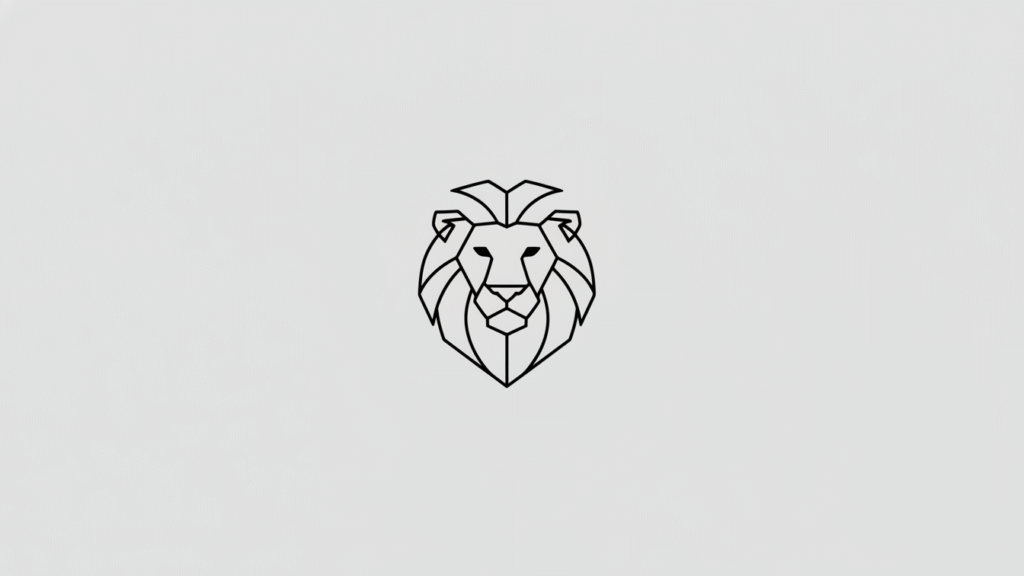
- What it looks like: Lions built from triangles, circles, and straight lines. Very angular and mathematical. Often flat colors.
- What it says: Innovation, technology, precision. The brand is forward-thinking and modern while still respecting tradition.
- Best for: Tech companies, startups, design agencies, modern brands that want a contemporary feel.
- Geometric lion designs follow the same modern aesthetics we see in today’s illustration styles
Heraldic or Shield Lions
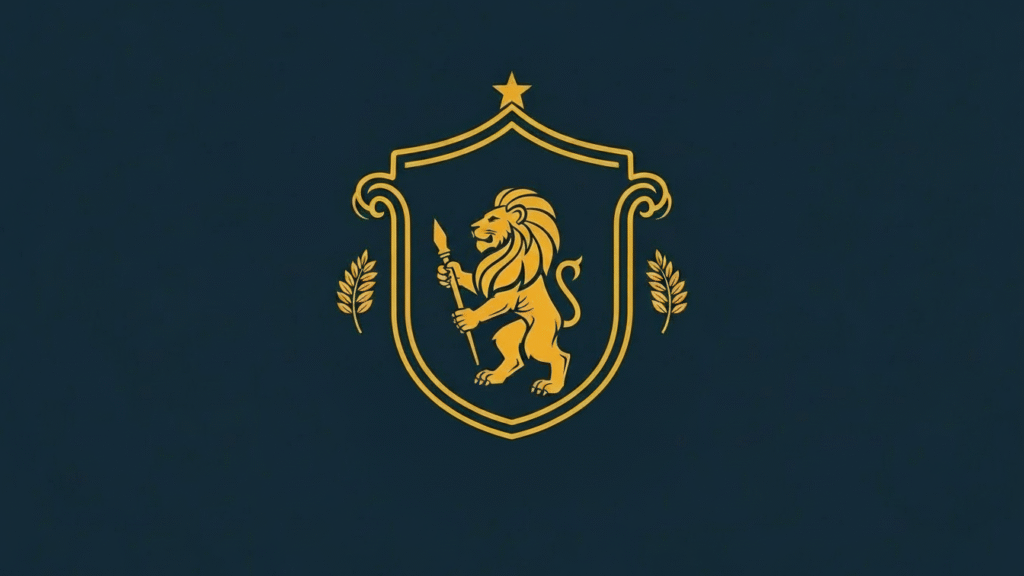
- What it looks like: Traditional medieval style, often inside a shield or crest. Rich details, classical poses (usually rampant).
- What it says: Heritage, tradition, prestige, established authority. The brand has history and pedigree.
- Best for: Universities, financial institutions, law firms, luxury brands with long histories.
Mascot / Illustrated Lions
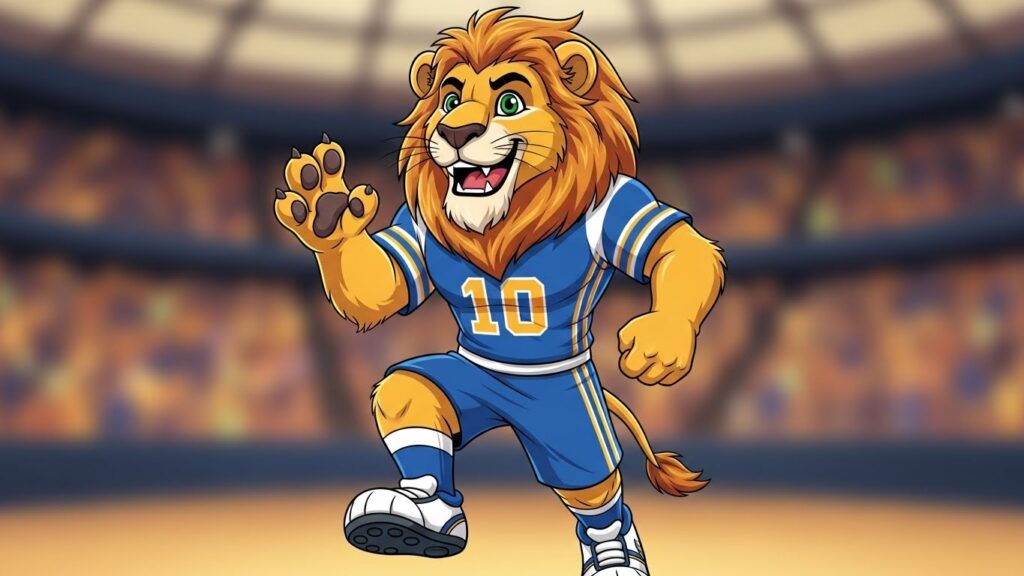
- What it looks like: Cartoon or realistic illustration of a complete lion. Often has personality and expression. Can be friendly or fierce.
- What it says: Approachable power. Strong but not scary. Relatable and memorable.
- Best for: Sports teams, entertainment companies, brands targeting families or younger audiences.
Roaring Lions
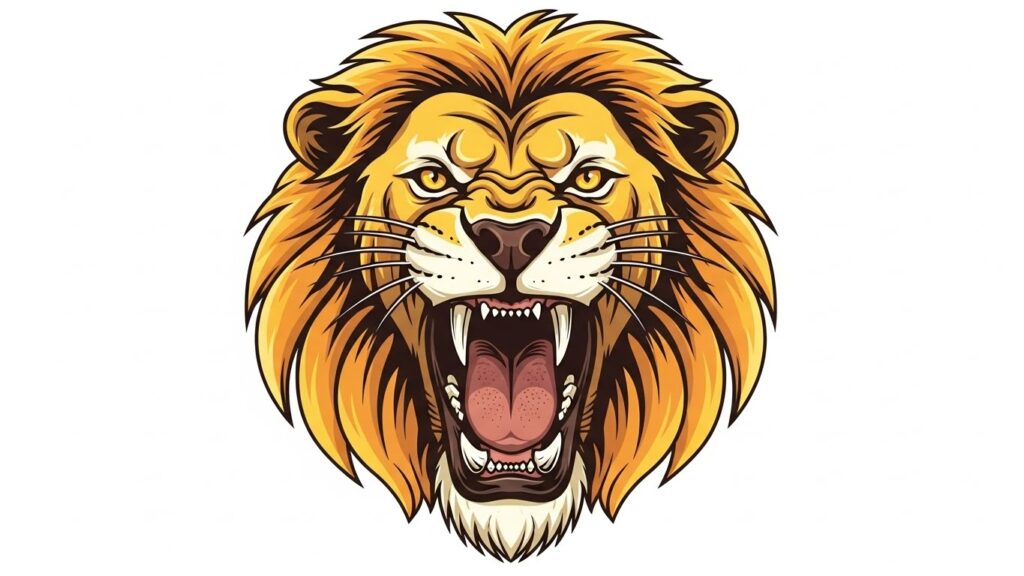
- What it looks like: Lion head facing forward, mouth open, showing teeth and mane. Very dramatic and bold.
- What it says: Raw power, energy, dominance. The brand is aggressive and unafraid.
- Best for: Sports brands, energy companies, bold consumer brands that want maximum impact.
Silhouette Lions
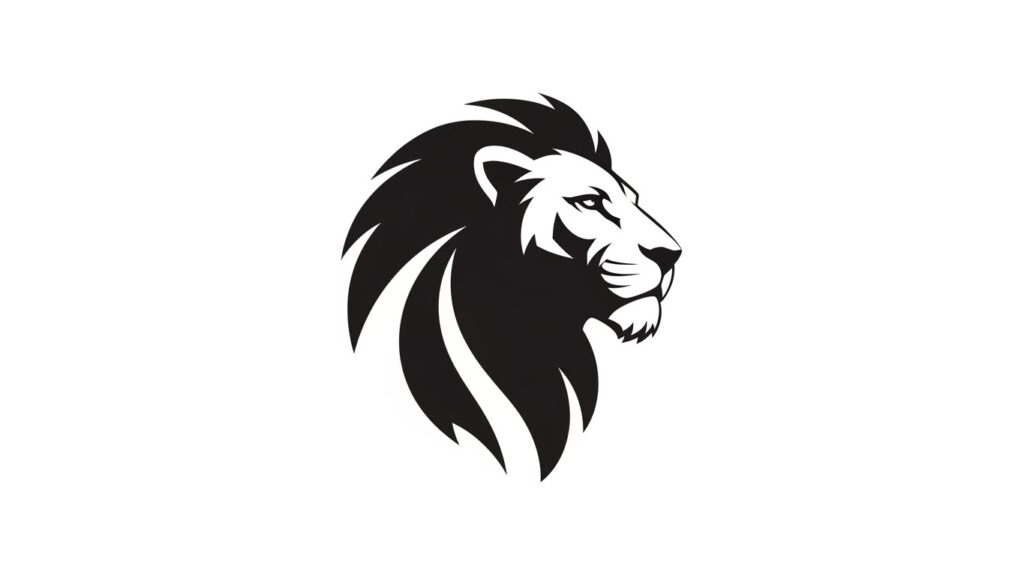
- What it looks like: Solid black shape of a lion. No internal details. Just the outline.
- What it says: Timeless, elegant, versatile. Classic sophistication without fussiness.
- Best for: Brands that want flexibility across materials and contexts. Works at any size.
Industries That Commonly Use Lion Logos (With Reasons)
The meaning of the lion symbol in logos fits certain industries perfectly. Here’s where you’ll see them most:
Finance & Banking

- Why lions work: Trust, security, stability. Banks like ING Group and Royal Bank of Canada use lions to communicate financial protection and reliability.
- When people see a lion, they think “strong” and “safe.” Perfect for managing money.
Luxury Goods

- Why lions work: Prestige, heritage, royalty. Lions have royal associations going back thousands of years.
- Luxury brands use lions to say “We’re premium. We’re exclusive. We’re worth the price.”
Automobile Brands
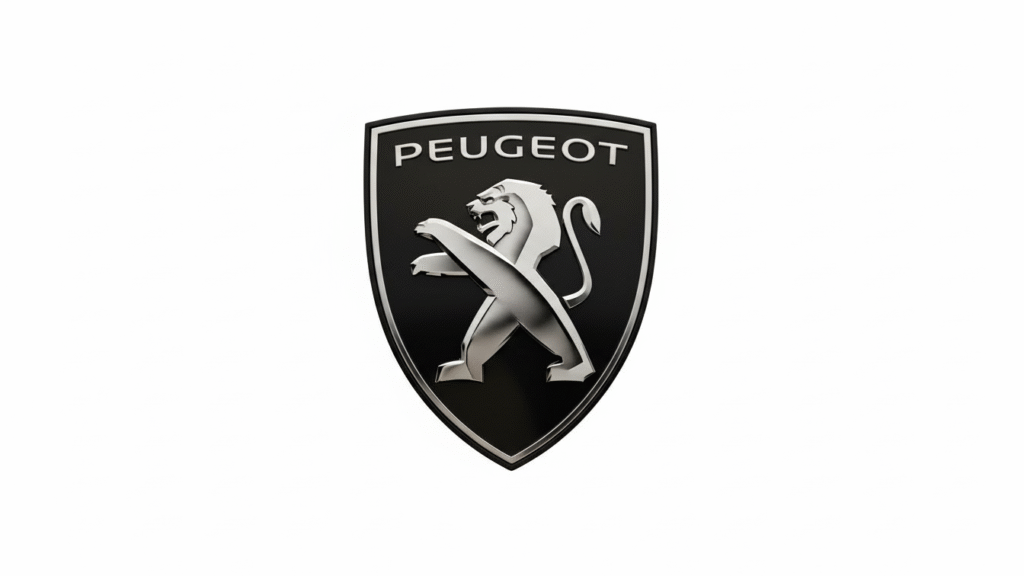
Peugeot chose the lion in the 1840s to represent the sharp teeth of their saw blades, comparing the strength of their steel products to a lion’s bite. The company trademarked the lion in 1858, making it one of the oldest car emblems in the world.
- What it represents: French heritage, quality engineering, performance.
- Why it works: The lion evolved with the brand, always staying modern while keeping tradition.
Education & Institutions

- Why lions work: Wisdom, tradition, leadership. Universities want to show they produce leaders.
- Lions say “We teach courage, strength, and how to succeed.”
Sports Teams
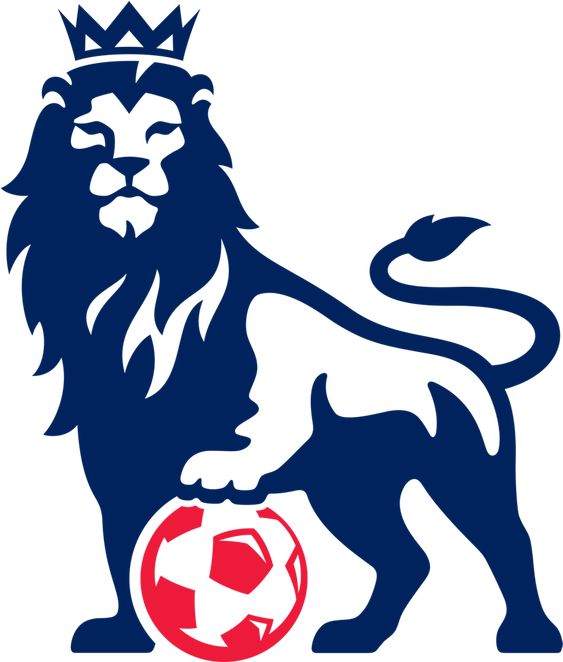
- Why lions work: Strength, courage, competitive energy. Sports are battles. Lions are warriors.
- Teams use lions to intimidate opponents and inspire their own players and fans.
Tech Startups
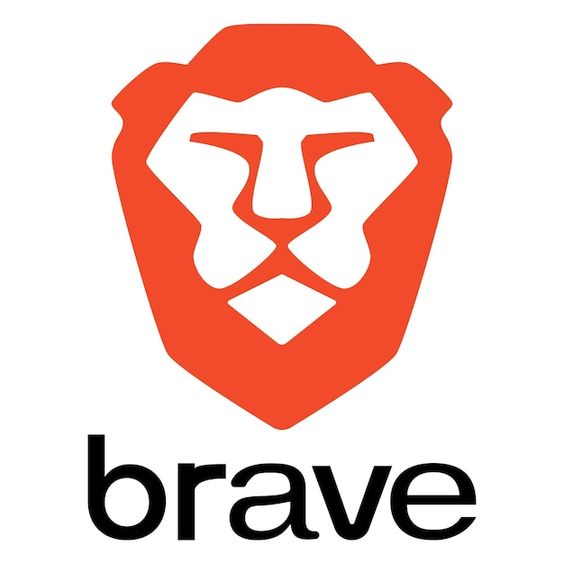
- Why lions work: Modern geometric lion designs blend tradition with innovation. They say “We’re bold enough to disrupt, strong enough to win.”
- Tech companies want power and authority without looking old-fashioned.
Famous Brands With Lion Logos (Explained)
Let’s look at real examples of the meaning of lion symbol in logos:
MGM
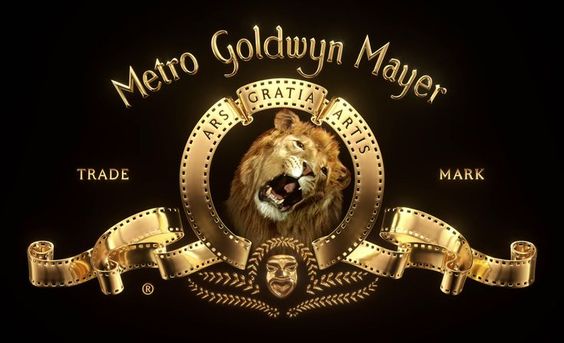
MGM’s roaring lion head enclosed in a circle of film became the logo of Hollywood itself. It appears before thousands of movies.
- What it represents: Entertainment power, dramatic impact, showmanship.
- Why it works: A roaring lion before a movie gets your attention. It promises something big and exciting.
Ritz-Carlton

The Ritz-Carlton emblem combines a lion head with a crown, fusing the symbol of a financial patron with the British royal seal.
- What it represents: Luxury hospitality, royal treatment, prestige.
- Why it works: The lion plus crown makes the luxury message unmistakable.
Singapore

Singapore uses the lion as a national symbol (the name means “Lion City”).
- What it represents: National strength, Asian power, pride.
- Why it works: Connects the modern city-state to ancient symbolism of courage and prosperity.
25+ Creative Lion Logo Examples
Here’s how different styles create different meanings in lion logos:
Minimal Style Examples
- Single line lion face
- Abstract lion made from negative space
- Simplified geometric lion profile
- Lion shape from just the mane outline
- Minimalist lion and typography combination
Why these work: Sophisticated, modern, easy to scale, work in any color.
Geometric Style Examples
- Triangular faceted lion head
- Lion built from circles and straight lines
- Low-poly lion design
- Sacred geometry lion
- Lion created from repeating patterns
Why these work: Contemporary feel, technical precision, appeals to modern audiences.
Premium/Heraldic Style Examples
- Traditional rampant lion on shield
- Lion with crown and banner
- Classical lion with flourishes
- Embossed gold lion crest
- Lion with royal regalia
Why these work: Instant prestige, heritage feel, luxury associations.
Mascot Style Examples
- Friendly cartoon lion face
- Full-body illustrated lion character
- Smiling lion with personality
- Athletic lion in sports gear
- Animated-style lion
Why these work: Approachable, memorable, builds emotional connection.
Vintage Style Examples
- Retro lion with distressed texture
- 1920s art deco lion
- Woodcut-style lion illustration
- Victorian-era lion engraving style
- Classic badge with lion
Why these work: Nostalgia, craftsmanship feel, stands out from modern designs.
Abstract Style Examples
- Lion suggested by flowing shapes
- Fragmented lion face
- Lion created from splashes or ink
- Cubist lion interpretation
- Lion formed from typography
Why these work: Artistic, unique, memorable, conversation-starter.
How to Design a Lion Logo (Practical Guide)
Want to create a logo that uses the meaning of a lion symbol effectively? Follow these steps:
Start with the Brand Personality
Ask: What do we want people to feel?
- Powerful and dominant? Go bold.
- Trustworthy and stable? Go traditional.
- Modern and innovative? Go geometric.
- Approachable and friendly? Go illustrated.
Decide the Lion Archetype: Ruler, Hero, Protector
Pick one main message:
- Ruler: Use rampant pose, crown, commanding position
- Hero: Use dynamic pose, forward motion, courage
- Protector: Use guardant pose (looking at viewer), shield, watchful stance
Choose a Design Style
Match style to your industry and audience:
- Finance/Law: Heraldic or silhouette
- Tech: Geometric or minimal
- Sports: Mascot or roaring
- Luxury: Minimal or heraldic
- Entertainment: Illustrated or bold
Use Symbolism Consciously
Every choice means something:
- Rampant (standing): Active, aggressive, bold
- Passant (walking): Steady, controlled, reliable
- Profile: Classic, traditional, formal
- Facing forward: Direct, honest, protective
- Mane emphasized: Strength, power, majesty
Typography Pairing
Typography plays a huge role here, as we cover in typography in book layout.
Match font to lion style:
- Heraldic lion: Serif fonts (traditional, established)
- Geometric lion: Sans-serif (modern, clean)
- Illustrated lion: Rounded fonts (friendly, approachable)
- Minimal lion: Thin, elegant fonts (sophisticated)
If you’re creating a logo for your business, our logo design service can help you craft a powerful lion-inspired mark.
Color Psychology
Choose colors that support your message:
- Gold/Yellow: Royalty, luxury, prestige
- Blue: Trust, stability, professionalism
- Red: Power, energy, passion
- Black: Sophistication, authority, timelessness
- Orange: Energy, creativity, approachability
Simplification for Modern Branding
Remember: Your logo needs to work everywhere.
- Can you recognize it tiny on a mobile screen?
- Does it work in black and white?
- Can someone sketch it from memory?
If not, simplify more.
Scalability & Logo Responsiveness
Create versions for different uses:
- Full logo (with company name)
- Icon only (just the lion)
- Horizontal version
- Stacked version
- Simplified version for very small sizes
If you need visual references while designing, Freepik’s lion logo collection is a helpful place to explore different styles and concepts.
Common Mistakes to Avoid in Lion Logos
Understanding the meaning of lion symbol in logos also means knowing what NOT to do:
Overly Detailed Designs
- The mistake: Too many tiny lines, complex mane details, intricate features.
- Why it fails: Loses clarity at small sizes. Looks messy. Dates quickly.
- Fix: Simplify. Focus on strong shapes and silhouettes.
Copying Existing Luxury Styles
- The mistake: Making your lion look exactly like Peugeot or MGM.
- Why it fails: No originality. Looks generic. Might face legal issues.
- Fix: Get inspired, but create something unique to your brand.
Using Cliché Roaring Lion Poses
- The mistake: Every tough brand uses an aggressive roaring lion.
- Why it fails: Overdone. Looks aggressive when you might want to be trustworthy.
- Fix: Choose a pose that matches your actual brand personality.
Poor Typography Pairing
- The mistake: Ornate lion with plain font, or geometric lion with flowery text.
- Why it fails: Mixed messages. Looks unprofessional.
- Fix: Match font style to lion style. Keep them in harmony.
Failing the “Small Size” Test
- The mistake: Logo looks great on screen but disappears when printed small.
- Why it fails: Modern brands need to work on apps, social media, everywhere.
- Fix: Test your logo at favicon size (16×16 pixels). If details disappear, simplify.
Final Thoughts
The meaning of the lion symbol in logos is deep, complex, and powerful. For thousands of years, humans have associated lions with strength, courage, leadership, and protection.
That’s why lion logos work so well today.
When you put a lion in your logo, you tap into ancient human psychology. You tell a story without words. You make a promise of power and reliability.
But like any powerful tool, lions need to be used correctly:
- Choose a style that matches your brand personality
- Pick a pose that sends the right message
- Simplify for modern use
- Make it unique to you
- Test it at every size
Do it right, and a lion logo can become your brand’s greatest asset. It communicates instantly what might take paragraphs to explain.
And if you need on-demand, high-quality graphics created fast, explore our unlimited graphic design service.
FAQs
What does a lion logo symbolize?
A lion logo symbolizes strength, courage, leadership, and authority. It tells customers your brand is powerful, trustworthy, and dominant in your field. The specific meaning depends on the lion’s design style and pose.
Are lion logos only for luxury brands?
What industries use lion logos most?
Why are lion logos so popular in heraldry?
Is a lion logo good for startups?
Can I use a lion logo if my industry already has famous lion brands?
What’s the difference between a rampant and passant lion?

